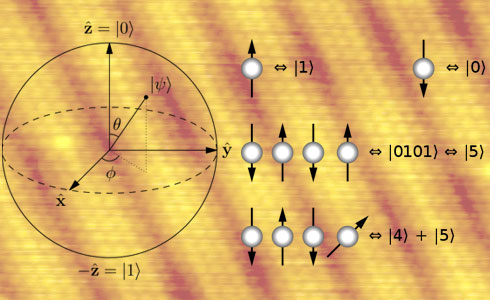Quantum computing: Australian researchers store data on a single atom!

Computers are everywhere these days. They play us music, tell us when to wake up, remind us that we’re late for an appointment, and provide us with entertainment. Even if we don’t realise it, so ingrained in our lives are computers that the world would be a very different place without them. Computing is also an incredibly fast moving field of technology, and research is finally taking us towards the exciting world of quantum computing!
Quantum computers will work using quantum bits, or qubits for short, which are analogous to the digital bits used in computers like the one which you’re using to read this article. Recently, a team of engineers at the University of New South Wales (UNSW) has successfully demonstrated, for the first time ever, how a single atom can be act as a qubit, effectively showing the first step in building an ultra fast quantum computer. And they might just have created the best qubit ever made.
A quantum computer is, simply, a computer which makes use of quantum mechanical phenomena to perform calculations. Well, I say “simply”… Let’s step back a moment. The simplest form of computers involve actual moving objects, and using the positions of those objects to perform calculations. This is essentially how an abacus works, if you’ve ever used one. The earliest computers to be designed, automated this process, using mechanisms. Charles Babbage’s famous, albeit never built, Analytical Engine worked on exactly this basic principle, and if it had been constructed it would have truly been the world’s first computer.
Essentially, the way these old mechanical computers work is to use the positions of their mechanical parts to perform mathematical and logic functions. This is actually the fundamental way in which all computers work. Since the discovery of electricity and the invention of electronics, computers have worked using electric circuits – effectively using the position of electrons instead of the position of actual moving parts. As technology has progressed, computers have become faster, smaller, and more reliable, until the world around us today.
In modern electronics, silicon is king. Silicon-based electronics are the standard used everywhere, though they’re reaching the limit of what they’re capable of. For the next generation of electronics, some people are beginning to advocate new materials, such as graphene, over silicon. But ultimately, others have a higher goal. Proponents of quantum computing believe that in the future, the most vital components of computers will not be electronics at all, but single atoms.
In quantum mechanics, any single particle, from an electron to an atomic nucleus, has a set of properties which can often be changed quite easily. Where past computers used motion of mechanical parts and modern computers use motion of electrons, quantum computers will use changes in the properties of these particles to perform their calculations.
One such quantum property is known as spin (the same property behind magnetism), and this is what the UNSW engineers managed to manipulate. They based their qubit on a single silicon atom and demonstrated how they used changes in the nuclear spin of the nucleus to store and retrieve information. Andrea Morello at UNSW’s School of Electrical Engineering and Telecommunications described how; “We have adapted magnetic resonance technology, commonly known for its application in chemical analysis and MRI scans, to control and read-out the nuclear spin of a single atom in real time.
Hammonds M (2013-05-16 07:10:32). Quantum computing: Australian researchers store data on a single atom!. Australian Science. Retrieved: Apr 19, 2024, from http://australianscience.com.au/technology/quantum-computing-australian-researchers-store-data-on-a-single-atom/
 Follow
Follow
2 thoughts on “Quantum computing: Australian researchers store data on a single atom!”
Comments are closed.